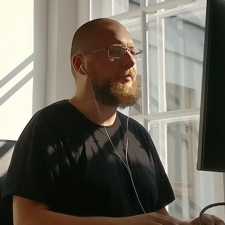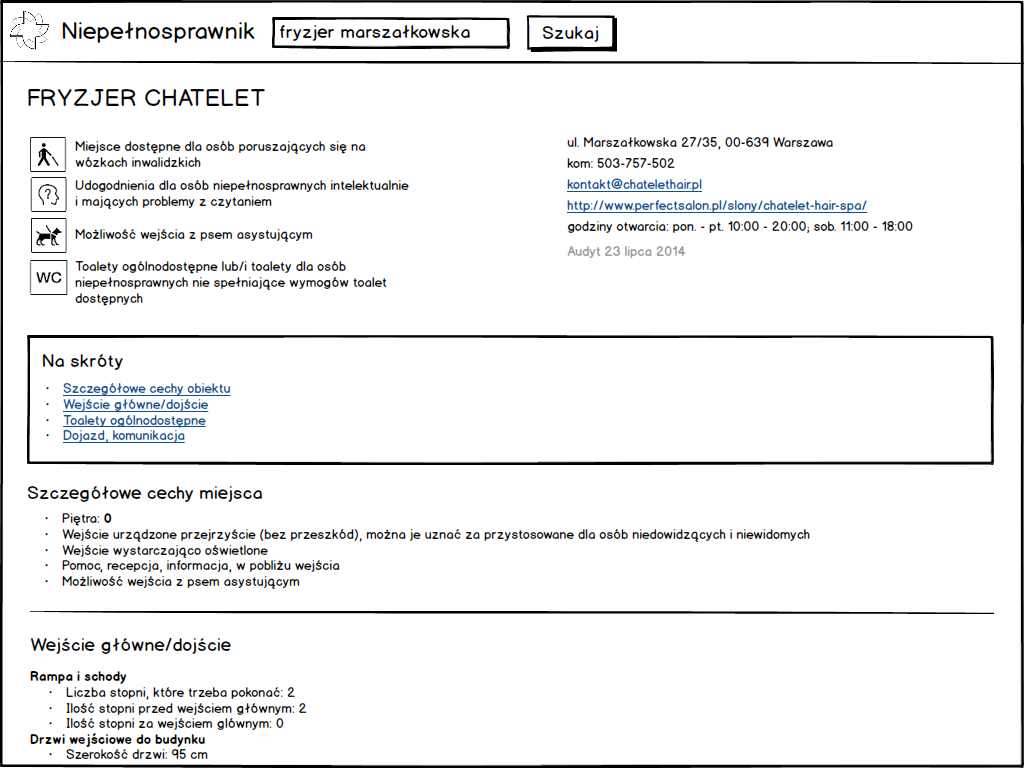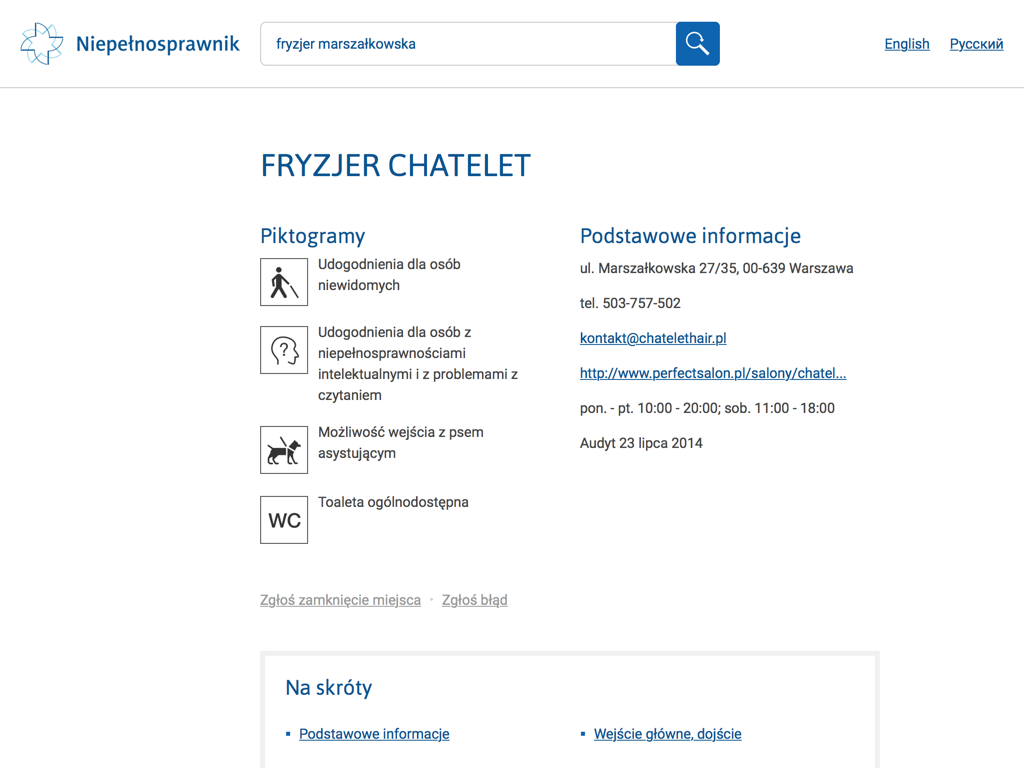Using Balsamiq for Better Design Communication
 Gregory Wolanski is an active writer about UX and recently published an article about his use of Balsamiq called "When and how I use Balsamiq". In it, he calls Balsamiq "an elegant digital napkin."
Gregory Wolanski is an active writer about UX and recently published an article about his use of Balsamiq called "When and how I use Balsamiq". In it, he calls Balsamiq "an elegant digital napkin."
The post focuses on how it can be used to quickly sketch out alternate views for design proposals without getting hung up on unimportant details. Gregory writes "I can use the time I would spend on exploring 3 approaches in high fidelity to explore 7 paths in Balsamiq."
He also writes about what he's learned working in the non-profit sector for NGOs and other organizations, including a fascinating reflection called "How To Responsibly Help NGOs with Technology".
Read on for our interview.
Q&A with Gregory Wolanski
What industry do you work in, and what is your title or job description?
I’m a designer.
I work in more than one industry, because I work in client services. It can be said that, at least until the end of the year, I work in the non–profit sector. Until recently, for over 2 years, I mainly worked in telecommunications. In the meantime, I also took part in projects for the healthcare, consumer products, and household goods industries.
What kinds of things are you excited about in your industry?
I’m excited about how much can be done by one designer. For 1.5 years, I helped one non-governmental organization after hours pro bono. At that time, I was able to help feed $10,000 (40,000 PLN) into the foundation's bank account, increase the traffic on the website by 21 times, and pay off some of the organization's technological debt. Nowadays, more single designers than ever in history can have a huge impact on the world around them.
Also, I’m delighted with initiatives like UX for Change and FreeCodeCamp.
(Note: Gregory is currently looking for open source projects in need of design help. If you know of any, contact him here.)
What suggestions do you have for someone looking to succeed in your role or industry?
I don’t know what success is or if I’m in a position to give people suggestions.
The thing that helped me to get to a place where I’m satisfied as a designer: embracing the chaos. People are messy, you can’t A/B test everything, and that’s OK. Know that.
If you haven’t done so yet, read Design is a job.
Oh, and just in case you want to help out in the non-profit sector using technology, I wrote four articles about that.
Why and how do you use Balsamiq Mockups?
I have a client who once said, “I don’t know what are you talking about; for me, balsamico is a condiment; that’s all I know”. For me, Balsamiq Mockups is an elegant digital napkin.
I use Balsamiq Mockups because it makes me a better designer and a better communicator. It allows me to explore seven approaches in my design process in the time I could explore three paths in high fidelity. It makes it easier for me to help some of my clients – we collaborate more closely when they don’t feel intimidated by pixel–perfect visualizations.
On the subject of "how," I wrote a whole article about when and how I use Balsamiq Mockups.
Do you have any tips or tricks, or favorite Balsamiq features that you’d like to share?
No. And I think that’s a good thing. You don’t have to be a power user to consider Balsamiq fast, easy, and efficient.
Some wireframes and their eventual implementations.
What are some challenges you’ve faced or mistakes you’ve made in your design career, and how did you recover and/or learn from them?
When I was a teenager, I spent my entire life savings on an Apple iMac G5 20”. I thought it would allow me to be as cool and professional as Douglas Bowman, Jon Hicks, and Jeffrey Zeldman. During the three months following the purchase, after realizing that hardware doesn’t give people superpowers, I keep asking myself, "What have you done? WHAT HAVE YOU DONE?!" I learned my lesson the hard way: You can’t buy everything.
I tried to build a company in my early 20s — full time, without capital. That was impossible for me, even though it was meant to be a client services company. I learned that, without capital, I can only try to build a company after hours.
On the other hand, a few years ago, I wanted to help an NGO. I approached it very thoughtlessly. I wasted a few people’s time, suffered disgrace, and endured a moral hangover for a long time. However, mistakes provide opportunities to learn. I took the opportunity and swapped the failure for the most mature design project in my portfolio. It wasn’t easy, but it was worth it.
Yeah, I’m good at making mistakes. I’ve made a lot of them. I’m still making a lot of them. I’m ashamed of some of them, but that’s the price you pay for taking action.
What other tools do you use for your job that you like? Why?
- Backblaze is a “set it and forget it” must–have backup solution for designers. It’s a great addition to local backups on an external hard drive. I’ve trusted it since 2013. They’ve failed me only once during all those years but in a way that allows me to still be their happy customer.
- Ommwriter is my go–to app for writing without overthinking, for dumping my thoughts. I know it’s only an app, but it does magical things for my ability to write.
- Napkin makes it easier for me to efficiently give good feedback to developers.
- Noizio helps me focus. My three favorite sounds: October Rain, Coffee House, and Wind Chimes (Wind Chimes are the best! :)).
- Numi is the calculator app for designers.
- Pixelmator is a Photoshop replacement for working with raster files.
- Pocketcasts enables me to feel like a part of something bigger, to feel like a part of the design community.
- Simplenote is my alternative to Evernote. I was a big Evernote fan for years but stopped when I noticed that they weren’t removing files I’d deleted in the app from their servers. It took me months to force them to remove the files.
- Trello is my go–to lightweight project management tool.
- StatusClock helps me to keep in touch with a designer who I’m peer–mentoring with (I’m in Europe, she’s in China).
- Todoist relieves my worries that I’ll forgot something in the context of my side projects.
- Tomato One is invaluable in overcoming procrastination.
- xScope makes my whole screen an artboard. It enables me to have guidelines all over my screen — also in my browser, not only inside software for designers.
What features or functionality is missing from your “toolbox” as a designer? What are the problems with UX tools today and where are they going in the future?
Recently, I needed to visualize the information architecture of a large website in my day job with a fellow designer. Ad hoc, we used Coggle for this purpose, but I’m convinced that there must be a better tool for this task (not necessarily mind–mapping software or OmniGraffle). If you read this and think, “It’s clear that there is a better way!”, let me know at balsamiq@gregorywolanski.com.
I’m happy with the UX tools I use at work today. As William Gibson once said, "The future is already here — it’s just not very evenly distributed." Tools such as React, GraphQL, and Tachyons allow me to design and iterate quickly in my browser, using real (or as close to real as possible) data. I like it. The only problem that I see with it is the time required by UX tools to transfer thoughts to the screen. However, it will take some time before computers start reading our minds.
Where do you look for inspiration? Are there some websites or designers you follow?
I subscribe to a lot of podcasts (see what I listen to) and newsletters (t12t Accessibility, UI Animation, Sketch App Sources, Jeff Gothelf’s newsletter, and more).
I’m always in the middle of a book. Right now I’m reading On Writing Well.
I follow Chelsea Tang, Jane Portman, Mike Monteiro, and Adam Hoscilo.
- Chelsea Tang is a talented designer from China. We’ve been peer–mentoring each other for a few months. If you’re looking for a designer in Canberra, Australia, be sure to talk to her.
- Jane Portman is a wonderful and helpful designer. My email exchange with her was one of the most memorable ones I’ve had in the last few years.
- Mike Monteiro is a design community grandpa. It’s wise and worth it to follow him.
- Adam Hoscilo is a designer I work with. He’s crazy about using bleeding edge technologies in prototyping.
Last but not least, I agree with Sofia Terzidou: A good ol’ bicycle ride is always refreshing!
Thank you, Gregory. Very insightful!
Do you have a story to share about the awesome things you do with Balsamiq? Send an email to champions@balsamiq.com with your stories or blog posts!






